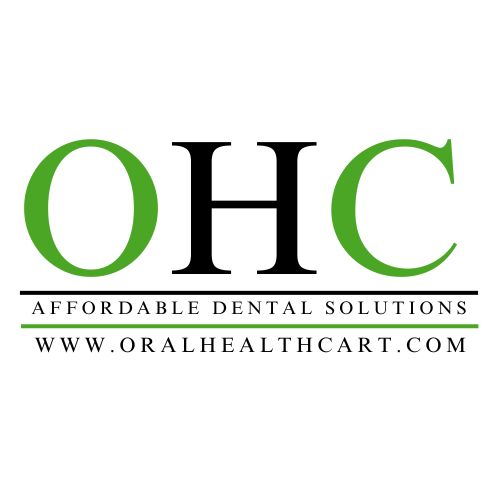Ultrasonic Scaler vs Manual Scaling Which Is More Effective
The Dental Cart
.jpg)
Ultrasonic Scaler vs Manual Scaling Which Is More Effective
One of the most popular yet crucial dental care procedures is scaling. It preserves the appearance and dental health of teeth by assisting in the removal of plaque, tartar, and stains. Traditionally, scaling has been performed manually using hand instruments. However, modern dentistry has introduced advanced tools like ultrasonic scalers that promise speed, efficiency, and patient comfort.
As a dentist or clinic owner, you may often wonder: Ultrasonic scaler vs. manual scaling— which is more effective? At Oralhealth cart, we believe that making informed equipment choices is key to offering the best patient care. Let’s dive deep into the comparison, exploring their advantages, limitations, and when each method should be used.
Understanding Manual Scaling
The conventional technique for removing plaque and tartar is manual scaling. Dentists use specialized hand instruments such as curettes and scalers to physically scrape deposits from the tooth surface.
Benefits of Manual Scaling:
-
Precision in delicate areas – Ideal for patients with minor tartar deposits or areas where ultrasonic vibrations may not be suitable.
-
No reliance on electricity – Works anywhere, making it reliable in case of equipment failure.
-
Preferred in specific cases – Such as patients with pacemakers (depending on model and safety guidelines).
Limitations of Manual Scaling:
-
Time-consuming, especially for patients with heavy tartar buildup.
-
Requires significant hand strength and dexterity, which may cause operator fatigue.
-
Can be uncomfortable for patients, especially in deep cleaning sessions.
Understanding Ultrasonic Scalers
Ultrasonic scalers use high-frequency vibrations (between 20,000 to 45,000 Hz) combined with a water spray to break up tartar, plaque, and stains. The vibrations remove deposits as the water cools the instrument tip and eliminates dirt.
Benefits of Ultrasonic Scalers:
-
Speed and efficiency – Removes large amounts of tartar quickly compared to manual instruments.
-
Improved patient comfort – Less scraping sensation, reduced pressure, and faster treatment.
-
Better access to deep periodontal pockets – The slim tip can reach areas where manual tools struggle.
-
Antimicrobial effect – The water spray helps wash away bacteria and biofilm.
Limitations of Ultrasonic Scalers:
-
Not suitable for all patients, especially those with certain heart devices or respiratory conditions.
-
Requires electricity and water supply, limiting portability.
-
Some patients may experience sensitivity due to vibrations.
Which One Is More Effective?
Effectiveness depends on the clinical situation:
-
For patients with heavy tartar and periodontal disease, ultrasonic scalers are more effective due to their speed, deeper reach, and patient comfort.
-
For light deposits or precision cleaning in delicate areas, manual scaling works better.
-
Many dentists use a combination approach—ultrasonic scaling for bulk removal, followed by manual instruments for fine-tuning. This ensures thorough cleaning while maximizing patient comfort.
What Dentists Should Consider Before Choosing
When deciding between ultrasonic and manual scaling, keep the following in mind:
-
Patient Safety – Always review medical history (e.g., pacemakers, respiratory conditions).
-
Clinic Budget – Ultrasonic scalers require higher investment, but they improve efficiency and patient satisfaction.
-
Treatment Needs – For routine cleanings, manual scaling may suffice. For complex cases, ultrasonic is superior.
-
Training & Technique – Dentists should be equally skilled in both methods to adapt to patient needs.
Why Choose Oralhealth cart for Dental Scalers?
At Oralhealth cart, we understand that high-quality dental equipment directly impacts treatment outcomes and patient trust. That’s why we provide:
-
Certified ultrasonic scalers with ergonomic designs and advanced features.
-
Durable manual instruments like scalers and curettes for precise performance.
-
Affordable packages tailored for new clinics and established practices.
-
Reliable warranties and after-sales support, ensuring long-term peace of mind.
So, ultrasonic scaler vs. manual scaling— which is more effective? The answer lies in using them complementarily. Ultrasonic scalers provide unmatched efficiency and patient comfort, while manual scaling offers precision in delicate areas. Together, they form the gold standard in modern dental hygiene care.
By investing in the right equipment from Oralhealth cart, dentists can elevate clinical outcomes, reduce chair time, and ensure patient satisfaction—all while maintaining compliance with the highest industry standards.
Categories: Prostho Instruments


 Oralhealthcart Products
Oralhealthcart Products

